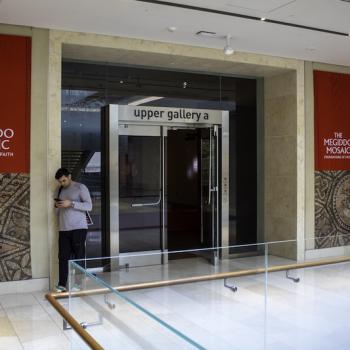
As we enter the season of Advent, we embark on a journey of anticipation and preparation. Advent, derived from the Latin word adventus, meaning “coming,” is a time set aside to reflect on the Incarnation of Jesus. It grounds us in the awe and wonder of Christ’s coming, keeping us focused on the truths we hold dear. Without intentional practices, it’s easy to forget the deeper meanings behind the season. Advent is a reminder. The Greek word for Advent, parousia, not only refers to the coming of the Messiah but also points to Christ’s second coming, reminding us that we live between these two monumental arrivals. Advent calls us to remember that Christ was promised to come, Jesus did come, and now we hold to the hope that Jesus will come again. During Advent, we reflect on how the promises of hope, peace, joy, and love are being fulfilled here and now as we eagerly await Jesus’ return. Interestingly, parousia was also used in a non-religious context to describe the visit of a high-ranking official to a subject state—an arrival marked by great expectation and preparation. This is a time to prepare with excitement and anticipation for the arrival of someone with authority who will bring change. Jesus came and changed things. Now, we live in the in-between, remembering the hope and promise of Jesus’ first coming and preparing our hearts and lives for Jesus’ return as King.
Four Weeks Looking at Mary’s Magnificat
This year, for Advent, I am blogging through Mary’s Magnificat, a prophetic song packed full of rich themes. Mary’s song is more than personal praise; it is a declaration of God’s enduring promise, revealing all God has planned through the words, ways, and works of Jesus. It’s a song of prophetic hope, especially for those who are often humbled and ignored. Mary’s Magnificat speaks directly to those who are overlooked and oppressed, as she exalts a God who lifts up the lowly and scatters the proud. This is not just her personal declaration of joy but a prophetic vision of the hope that God is with and for those who are humbled and ignored. It reminds us of the hope Mary clung to and the ongoing transformation God invites us into today.
The Lead a Quiet Life blog on Patheos explores simplicity, authenticity, and faithfulness, inspired by 1 Thessalonians 4:11-12. It encourages slowing down, rejecting excess, and embracing a quieter way of following Jesus. Mary’s Magnificat resonates deeply with this pursuit, as it magnifies God’s work through humility, simplicity, and trust. This prophetic song invites us to embrace a life focused on God’s presence and purposes, rather than the noise and excess of the world. In this post, we explore how Mary’s Magnificat prophetically declares the hope that God is for those in humility, those the world may overlook but whom God sees and cares for.
Listening to Mary’s Voice: A Wisdom We Can’t Ignore
Over the years, perhaps we’ve focused enough on the men in the story—there’s certainly no shortage of them. But we cannot overlook the significance of Mary. God chose her with intention and purpose. Mary comes to understand the prophetic hopes and promises in the scriptures in unique ways. As Evangelicals, we may have at times downplayed Mary’s role, perhaps out of concern that emphasizing her might seem too Catholic. In doing so, we’ve sometimes prioritized the masculine aspects of the story and overlooked the profound contributions of women, especially Mary. In this series, I hope to shift our focus to Mary’s pivotal role, allowing her prophetic proclamation and song to teach us, including a way of being that elevates those often humbled and ignored.
Mary’s Magnificat is not just a personal response or song—it is a gospel or declaration for the marginalized. It speaks of God’s favor for those overlooked by society. By lifting up the humble and scattering the proud, Mary’s song provides a prophetic vision that continues to challenge us today, especially in a world that often values power over humility, wealth over simplicity, and excess over sufficiency.
Mary’s Magnificat in Luke 1:39-56: A Vital Part of the Advent Narrative
Luke, known for his meticulous attention to detail, especially in his portrayal of Jesus’ coming, places Mary as an integral figure in the Advent narrative. The Gospel of Luke is often considered the Gospel that highlights women the most, and it includes several stories and perspectives that emphasize the voices and roles of women in the life and ministry of Jesus. As we reflect on Mary’s Magnificat, we are invited to become students of her faith, humility, and boldness—also her scriptural and prophetic understanding.
Mary’s Magnificat is a profound reminder that God sees those who are humble and ignored. It’s a song of liberation and hope for the oppressed, declaring that the Messiah has come to bring justice and transformation. This Advent, as we reflect on the hope of Jesus’ first coming, let us not forget the voices of those who have been sidelined. Let us listen to Mary’s voice as a reminder that God’s kingdom is a place where the humble are exalted, the hungry are filled, and the proud are scattered.
Reflections on the Context of Mary’s Magnificat
As I reflect on Luke 1:39-56, I first notice that Mary didn’t hesitate after receiving the news. She immediately set out and traveled to a town in the hill country of Judah, heading straight to Zechariah’s house to greet Elizabeth. We could learn a lot from her promptness and willingness to act. When Elizabeth hears Mary’s greeting (a Spirit-filled blessing of “Shalom”), the baby in her womb leaps, and Elizabeth, filled with the Holy Spirit as a result, expresses her joy. Overcome with emotion, Mary responds by singing a beautiful song of praise that declares Mary’s new understanding of the prophetic promises and hope that is coming with and through Jesus. This song, known as the Magnificat, magnifies God and celebrates the hope, peace, joy, and love that are now coming into the world. Some scholars speculate that a later poet may have composed the song and attributed it to Mary, but I choose to take Luke at his word, that he investigated this and talked to Mary about it. During her three to five-day journey to Elizabeth, Mary would have reflected on the story of Hannah and many prophetic promises she grew up with, beginning to write or memorize her own inspired song to share the news and her new understandings. In that moment with the angel, Mary began to see scripture and the messianic promises she had known in a new light. During her journey, she would have had ample time to reflect on how her understanding of the scriptures had deepened, knowing the world was changing with the fulfillment of these promises. Mary’s song, then, becomes an intentional liturgy or sermon that teaches us how to read the scriptures and prophetic promises through the lens of Jesus, especially those promises that resonate with the humbled and ignored.
Mary magnifies the Lord in this song, acknowledging God’s faithfulness in lifting up the humble and fulfilling the promises they had long hoped for. Her opening line, “My soul magnifies the Lord,” expresses both adoration and recognition of her role in God’s redemptive plan. Mary provides a model for how we are to live. Just as she was called to play a role in God’s story, we are also invited to bring hope, peace, joy, and love into our communities. Rather than lifting us from humility to power, God calls us to experience the Holy Spirit. This empowered way of living missionally sends us out as active participants in God’s work of reconciliation and restoration, especially in the places where we are rooted.
Mary’s Magnificat: More Than a Song, It’s Prophetic
It is more than a joyful song. It is a prophecy. Prophecy is the spirit of God speaking to us, through us, and with us in ways that are both forth-telling (challenging us) and foretelling (predicting what will come true). Later in the story, in Acts 2:17-21, Luke reminds us that the prophet Joel foretold that in the days of the Messiah, God would pour out the Holy Spirit on all people—men and women, old and young—so they could experience God’s Spirit equally, with visions and dreams. This is already being fulfilled in Mary’s journey. God has poured the Holy Spirit upon her, and now Mary is prophesying in the Spirit. This prophetic proclamation is meant to teach, fill us with promise, and serve as a powerful witness to the ways, words, and works of Jesus from this point on. These things matter not just for the time of the coming of the Messiah, but also for the time until Jesus comes again. Mary’s Magnificat is a prophetic hope for the humbled and ignored, a hope that continues to echo through the ages, reminding us that God’s kingdom belongs to those who are overlooked by the world but are seen and cherished by Him.
Reflections on the Hope of Mary’s Magnificat
I want to emphasize how she highlights God’s faithfulness to the humble. In Luke 1:46-48, Mary praises God for recognizing her lowly state and lifting her up. She acknowledges that, as a simple servant, she has been chosen for something extraordinary, which is the work of God. The NET translation puts it this way: “And Mary said, ‘My soul exalts the Lord, and my spirit has begun to rejoice in God my Savior, because he has looked upon the humble state of his servant. For from now on all generations will call me blessed.’” Mary’s praise overflows because she recognizes that through this moment of Advent, God is lifting up the humble. God is coming for the poor and downtrodden, and in this, there is deep hope. The Advent story reminds us that through Jesus’ birth, life, ministry, death, and resurrection—God is restoring hope to the world.
Mary’s recognition of God’s favor is a declaration of hope not only for her but for all who are marginalized or overlooked. In a world that often values power, wealth, and status, her song reminds us that God sees and honors the humble. God lifts us up, but not in a way that moves us from humble beginnings to places of power, but rather in a way that calls us to live in our humble estate with a powerful hope. This should encourage us, especially in times when we may feel insignificant or ignored. Even in our downtrodden moments, hope is breaking in, and the world is being redefined. This hope is Jesus—the gospel, the goodness, and the promise that God still offers hope to us today.
In Mary’s song, the word “magnifies” conveys her continual praise and exaltation of the Lord, highlighting her deep and ongoing celebration of God. This exultation reflects the fullness of her joy in God’s faithfulness. When she says, “God my Savior,” Mary acknowledges her need for salvation, recognizing her humble state. The focus here is not on her, but on God’s deliverance. The phrase “humble state” speaks to her lowly position—not as humiliation, but as an expression of servanthood. God calls us to embrace our humility, to be present in quiet, unnoticed places. Mary’s recognition of God’s work through her challenges us to focus not on our own elevation, but on God’s redemption and the hope it brings to others. This passage invites us to reflect on our own humility, how we can find hope in God’s promises, and how that hope is meant to transform those around us.
Other Scriptures
Hope for the Humble is a central theme in the New Testament, with Jesus emphasizing humility as a core value of the way of the Kingdom of God. In the Beatitudes, Jesus declares, “Blessed are the poor in spirit, for theirs is the kingdom of heaven” (Matthew 5:3), and “Blessed are the meek, for they will inherit the earth” (Matthew 5:5). Jesus brings hope to the broken, grieving, and those weighed down by life. James, writing to marginalized churches, reminds us that God has chosen the poor in the world to be rich in faith and heirs of the kingdom (James 2:5). Despite being overlooked by society, the humble are empowered by God to represent the Kingdom of God and to prophetically speak out against those the world deems powerful and important.
Paul also emphasizes this theme in 1 Corinthians 1:26-29, highlighting that God often chooses the weak and despised to shame the strong and nullify the things of this world. For those who feel rejected, Jesus’ kingdom offers the hope that we will not only experience abundant life but be used to proclaim God’s message even to the powerful. Mary’s voice in the Magnificat speaks of the hope that God is for the humble, the weak, and the despised.
This humility is not only the way of Jesus’ ministry but the way we are called to live. Jesus teaches that those who humble themselves will be exalted, while the proud will be humbled (Luke 14:11). The path to intimacy with Jesus and His greater works is through humility. Peter urges us to “humble ourselves under God’s mighty hand, so that he may lift you up in due time” (1 Peter 5:6). In humility, we find hope as God lifts us to serve others, not for our own glory, but for the sake of His kingdom. As Paul writes in Philippians 2:5-11, we are called to have the same mindset as Jesus—who, though equal with God, humbled Himself to serve others, offering hope to the world.
Three Takeaways from Mary’s Recognition of Her Humble State
Allow me to suggest three takeaways from Mary’s recognition of her humble state and the hope she finds in God:
- Mary’s prophetic proclamation of hope—that God lifts up the humble—calls me upward. This Advent truth invites me to draw closer to God, embracing the reality that I am enough before Him. He delights in my humble state. From here, I overflow with hope, declaring that God lifts the humble and brings justice to the oppressed.
- Humility leads me inward, opening my heart to recognize my need for God’s grace and to practice disciplines that keep me humble. In the church, I am reminded that this is a place to serve others with compassion and love. The scriptures promise that in our humility, God draws close, guiding us and utilizing our surrender.
- Living out the hope found in humility leads me outward, embodying Jesus’ mission of hope to others in their humble place. I accept the humility I’m in, using it to reach out to the broken and oppressed. Who is in my gutter that needs to hear the truth that in humility, we find God and experience the hope He offers to those in this space?
Closing Thoughts
In Luke 1:46-48, Mary expresses her hope in God’s faithfulness, recognizing God’s choice of her, a humble servant. This week, we focus on the hope of being humble servants that Advent brings—the belief that God is faithful to His promises, even in bleak times. Mary’s song declares that God sees and values the humble, but is also offering redemption for the world through the humble. Through her example, we find hope in God’s faithfulness, no matter how small or unnoticed we may feel. How can we, like Mary, find hope in God’s willingness to lift us up? How does the Advent season invite us to see God’s work in the small, unnoticed places of our lives? How does the humble birth of Jesus inspire us to bring hope to the lowly and oppressed? May we find the song of advent in our own lives, accepting our humility as a gift of God.













